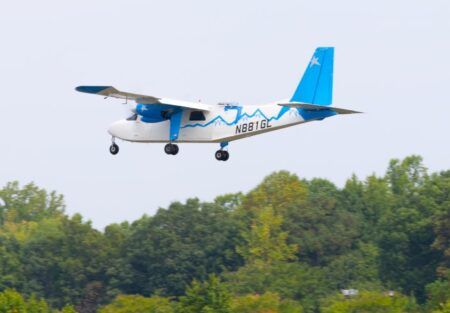NASA researchers have wrapped up a series of flight experiments with Boeing’s ecoDemonstrator 757 airplane, testing technologies designed to reduce fuel consumption and emissions.
The first of these tests, the Active Flow Control Enhanced Vertical Tail Flight Experiment, assessed the effect of tiny devices called sweeping jet actuators. Thirty one of these devices were installed on the aircraft’s vertical tail, which provides stability and directional control during take-off and landing, and tested to determine what, if any, effect they had on the aerodynamics of the tail and rudder surfaces.
To validate this theory, the ecoDemonstrator made six roundtrip flights this month between Boeing Field in Seattle and the Strait of Juan de Fuca, a body of water just north of Puget Sound that marks the international boundary between the USA and Canada. The active flow control technology was tested in a variety of configurations and flight conditions, including simulated engine failures.
“Initial flight test results seem to validate the wind tunnel testing we did with a Boeing 757 tail that was outfitted with this same active flow control system. But we still have a lot more analysis to do,” said John Lin, active flow control experiment principal investigator, Langley Research Center.
Wind tunnel tests were performed late in 2013 at the National Full-Scale Aerodynamic Complex (NFAC)at NASA’s Ames Research Center in Moffett Field, California. Results from these tests suggested future aircraft designers may be able to scale down the size of the vertical tail by about 17% and reduce fuel usage by as much as 0.5%, which quickly adds up to big savings.
April 21, 2015




